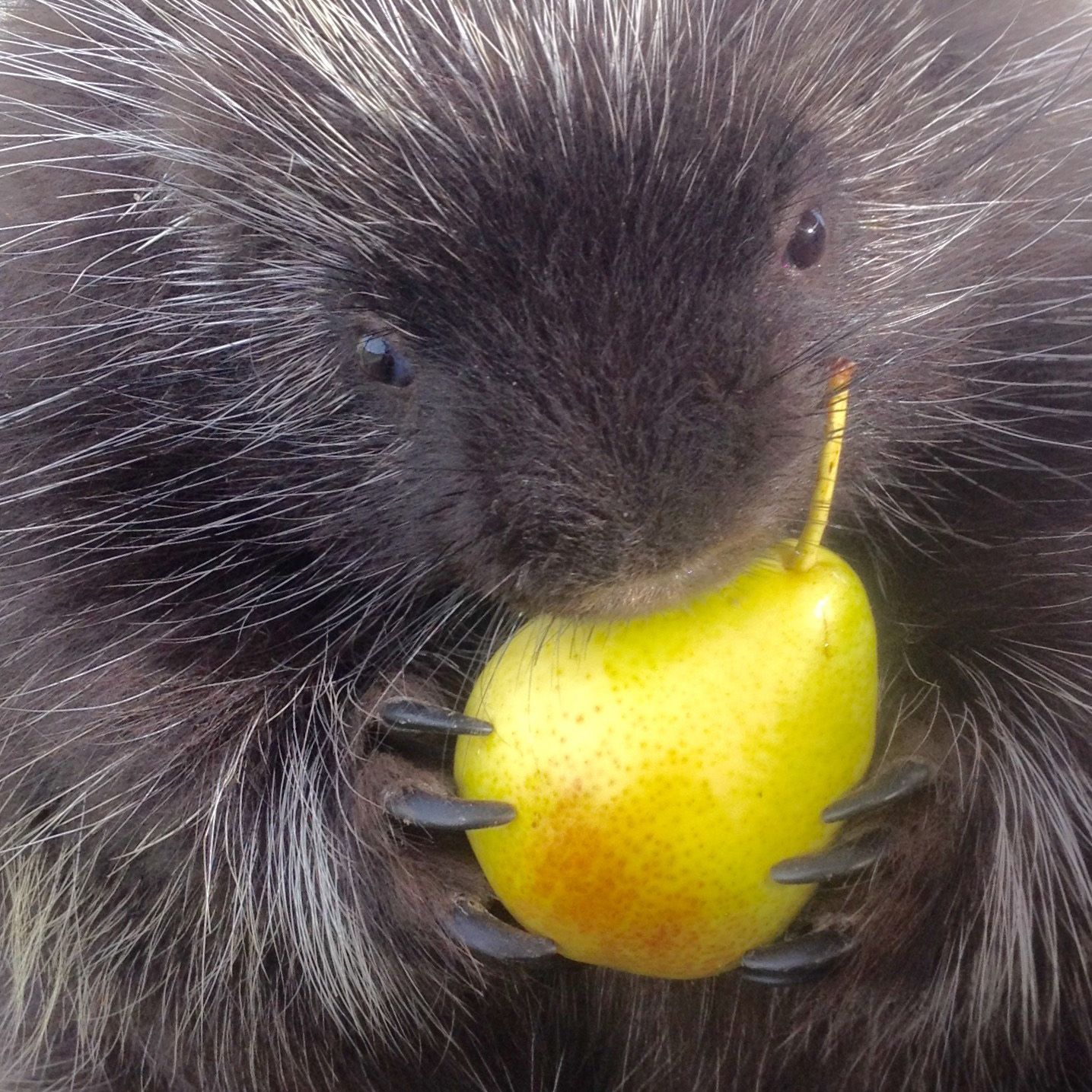Profile | Penelope

-
BirthdayFemale, born 2014
-
SpeciesNorth American Porcupine
Erethizon dorsatum -
Professor ofForest propagation and preservation
-
Field of StudyGirdling and quills
-
Food and Vet Care$345 per month | $4140 each year
About the species
RANGE | The North American Porcupine has a very large range. They can survive in a variety of climates and elevations. Primarily they live in coniferous and mixed forested areas in Canada, Alaska, and much of the northern and western United States. There is a small population in the eastern United States.
FUN FACTS | These animals are the second largest North American rodent in size, the beaver is slightly bigger. In addition, the range of this species is the northernmost of all porcupines. They are covered with thick dark brown fur to help them hide in the trees and shadows and also have long, lighter colored guard hairs. Underneath their coarse fur, these animals have up to 30,000 characteristic quills, starting at the back of the neck and extending to their tail. The quills of this animal can grow up to a few inches long, about the size of a plastic toothpick, and are barbed like an arrow. The quills of these animals are covered with a topical antibiotic, mainly intended for self-defense if the porcupine is accidentally poked by its own quills. quills are so lightly attached, they come off easily when a predator encounters them. When the quills enter the skin of a predator, they work their way further into the skin at a rate of 1 mm an hour. Porcupines are more likely to flee predators, but if cornered, it will erect its quills, turn its back to the attacker and lash its barbed tail. Once thrust into another animal's skin, these spines become embedded in their paw or mouth which makes survival a real struggle.
Like the beaver, the winter diet of these herbivorous animals mainly consists of tree bark, often feeding on the cambium layer of a single tree until it dies before moving onto another. During the rest of the year, they feed upon green vegetation such as seeds, grasses, leaves, twigs and fruits as well as supplementing their diet by gnawing on occasional bones and antlers that are rich with mineral nutrition. Their powerful front teeth, called incisors, enable them to constantly chew and gnaw. They are constantly growing and are orange, due to rust oxide in them which helps them to be hard and durable.
Meet Penelope
Penelope was found on the side of the road by a passing motorist. Her mother was hit by a car and had managed to get them both to the side of the road, but could go no further. While uninjured, Penelope was so young that she just stayed with her mom. Once the pair were brought to the local wildlife center, the veterinarian was able to operate on her mother. Because the antibiotics and pain medications could be toxic for the still-nursing Penelope, she was separated from her mother. Soon she became very comfortable with people and, with no opportunity to learn critical survival skills from her mother, she could no longer be released. The wildlife center reached out to us and we agreed to become her new home.
Despite her health issues, she is a spunky porcupine! Her favorite activity is going on walks to find blackberry bramble and munch on those prickly leaves. She also loves pumpkin blossoms, as well as the actual pumpkins, chewing on both inside and out!
SPECIAL NEEDS | When Penelope arrived, we almost immediately knew something wasn’t right. She would become lethargic, with shallow breathing and a very intermittent appetite. We called the facility and they said that she had occasionally acted like that but always seemed better by the next day or so. They had done bloodwork and taken X-rays but nothing showed up. We took her to the vet, and again the tests showed nothing abnormal. As this persisted, we continued to monitor and treat her. We tried bronchodilators and nebulizing treatments, and even inhalers. We have also continued to investigate the the cause—ranging from additional Xrays to doing cardiac and pulmonary ultrasounds- but nothing has ever yielded any insights to a diagnosis or treatment plan. We retired her from programs after a few years when we saw that the travel—especially on warmer days—were beginning to impact her more. So, now she is enjoying an early retirement while we continue to seek solutions.
Likes
She loves small stuffed toys that she can pick up and manipulate. Her toys have to be heavy duty, since their chewing can be quite destructive, and all of the stuffed animals for our porcupines are pink pigs of various sizes so they can be kept separate to protect the other animals from quills. She loves rodent and rabbit chew toys, often made with willow and alfalfa, that we typically hang in her enclosure to entice her to climb since it is a natural behavior.
Wishlist
-
Dog toysSome dog toys are safe to give porcupines—such as the Ho-lee roller toys and heavy duty stuffed toys.
-
Natural woodfresh cut, non-sprayed branches from maple, oak, willow, birch, pear, or apple trees
-
Welding glovesOk, we admit it—these are for us!
-
Travel carrierto leave in enclosure for evac training